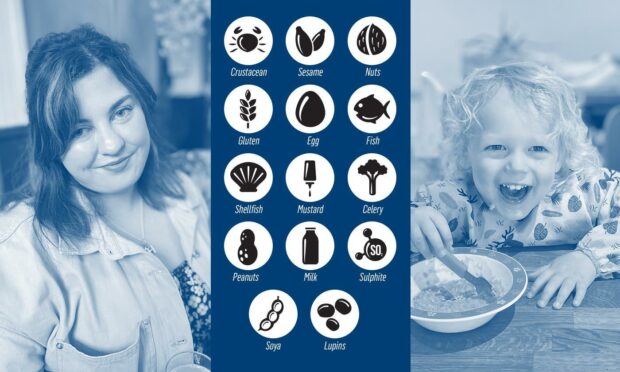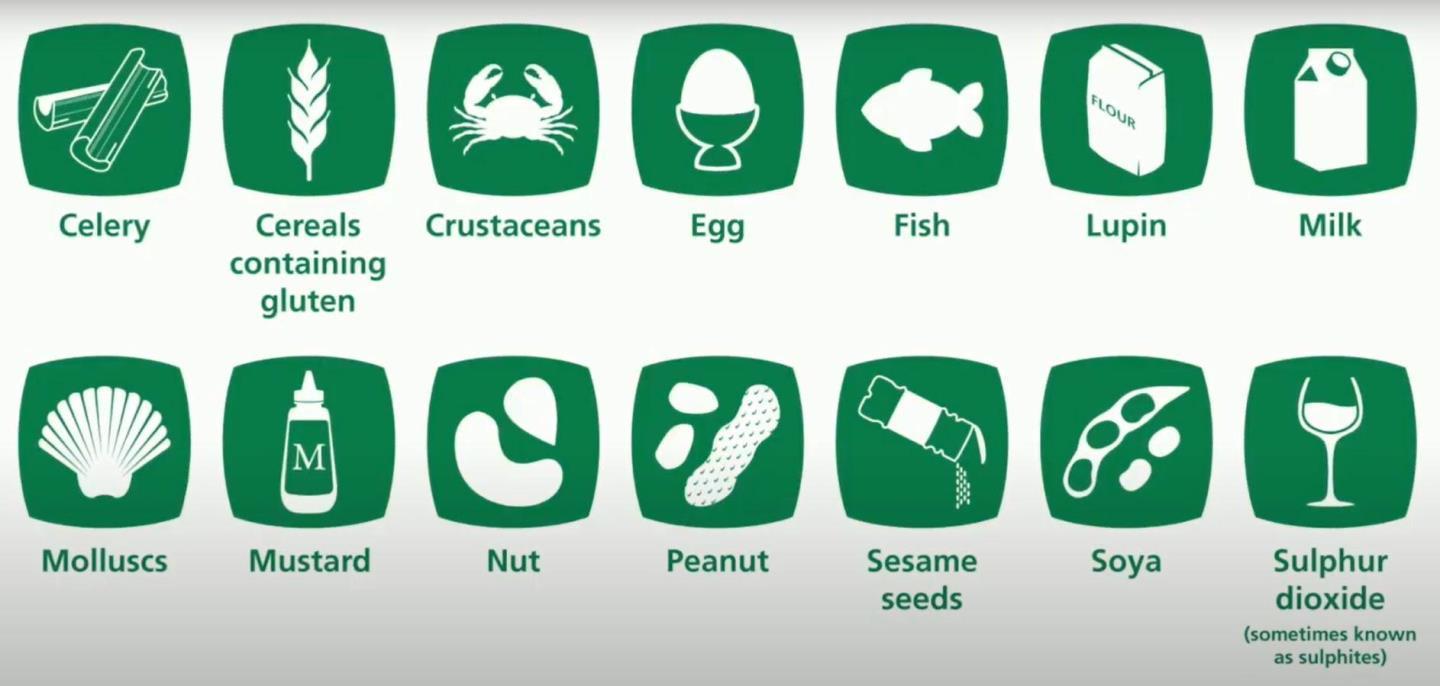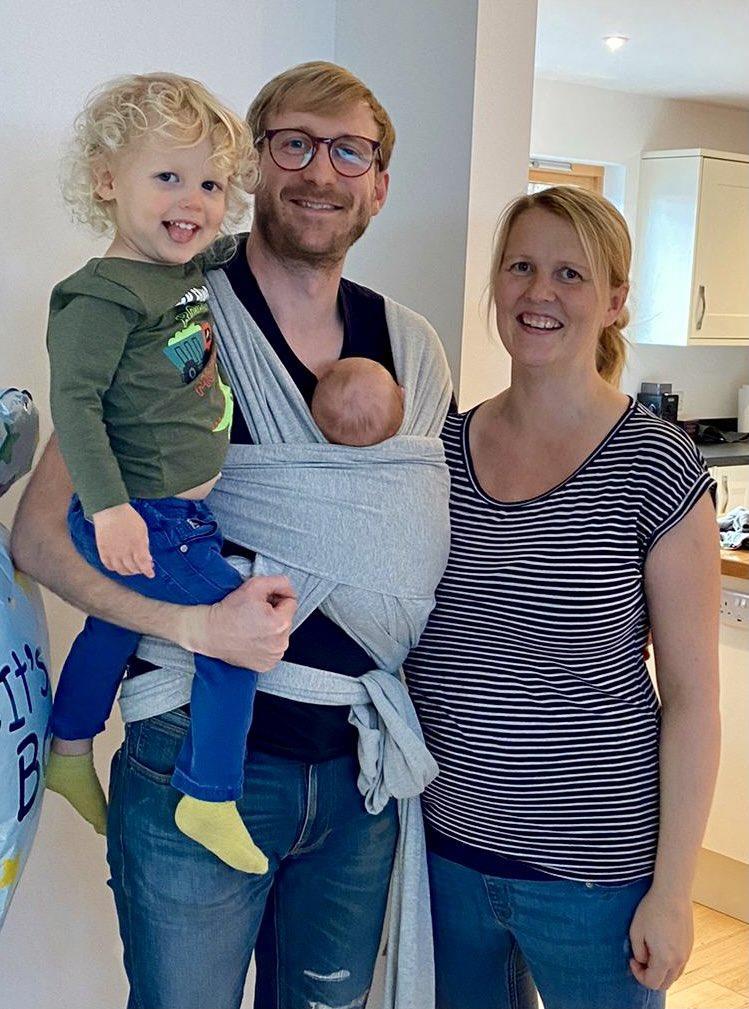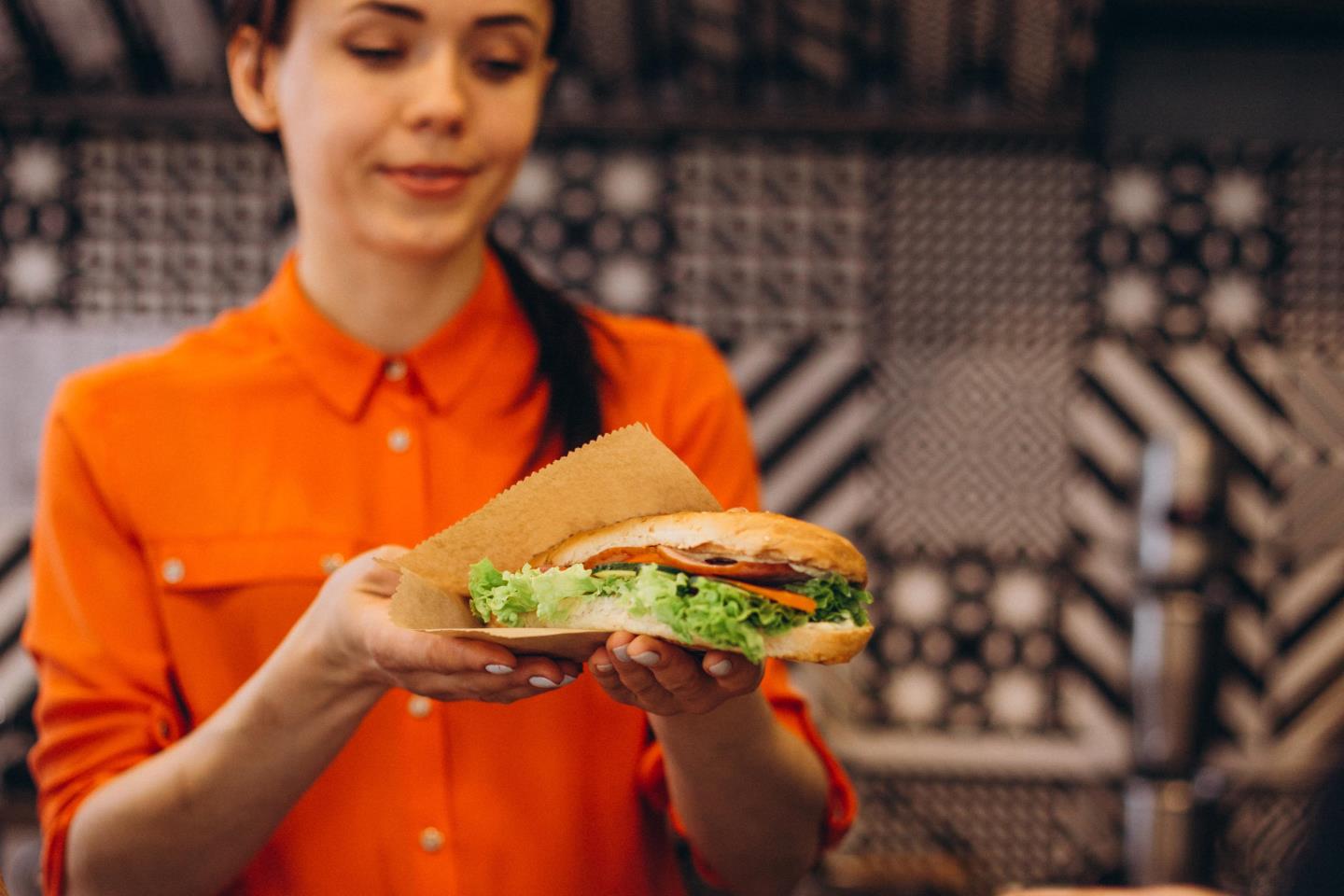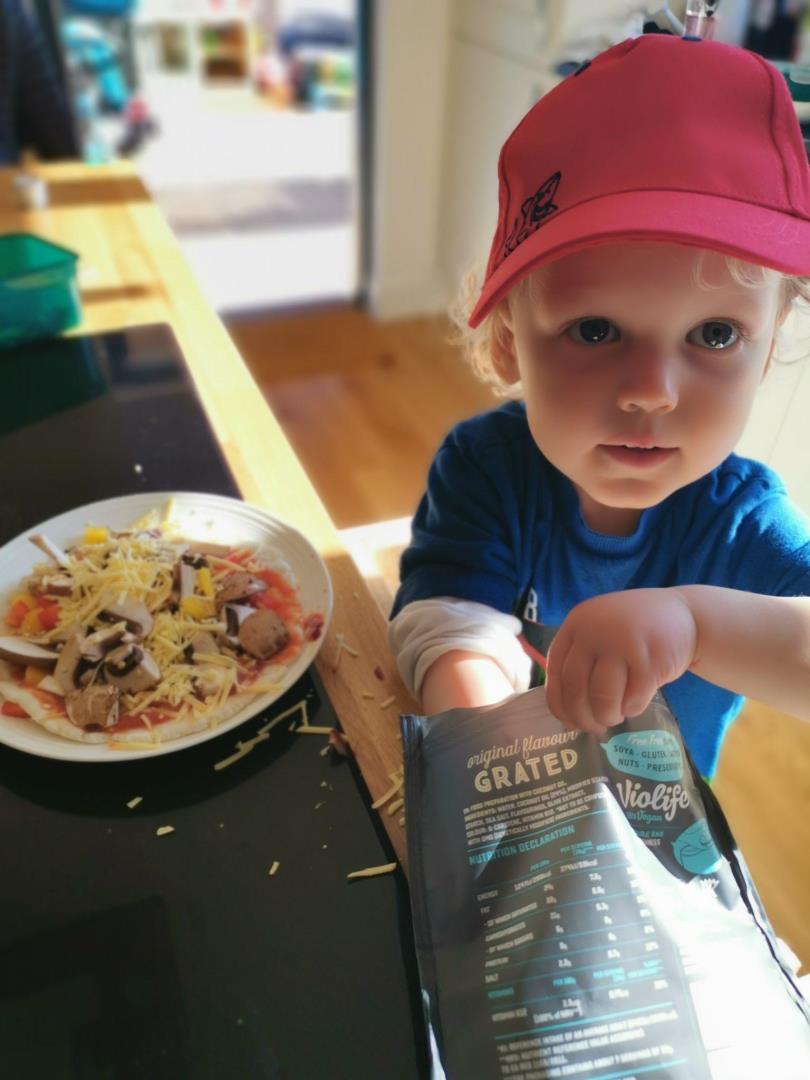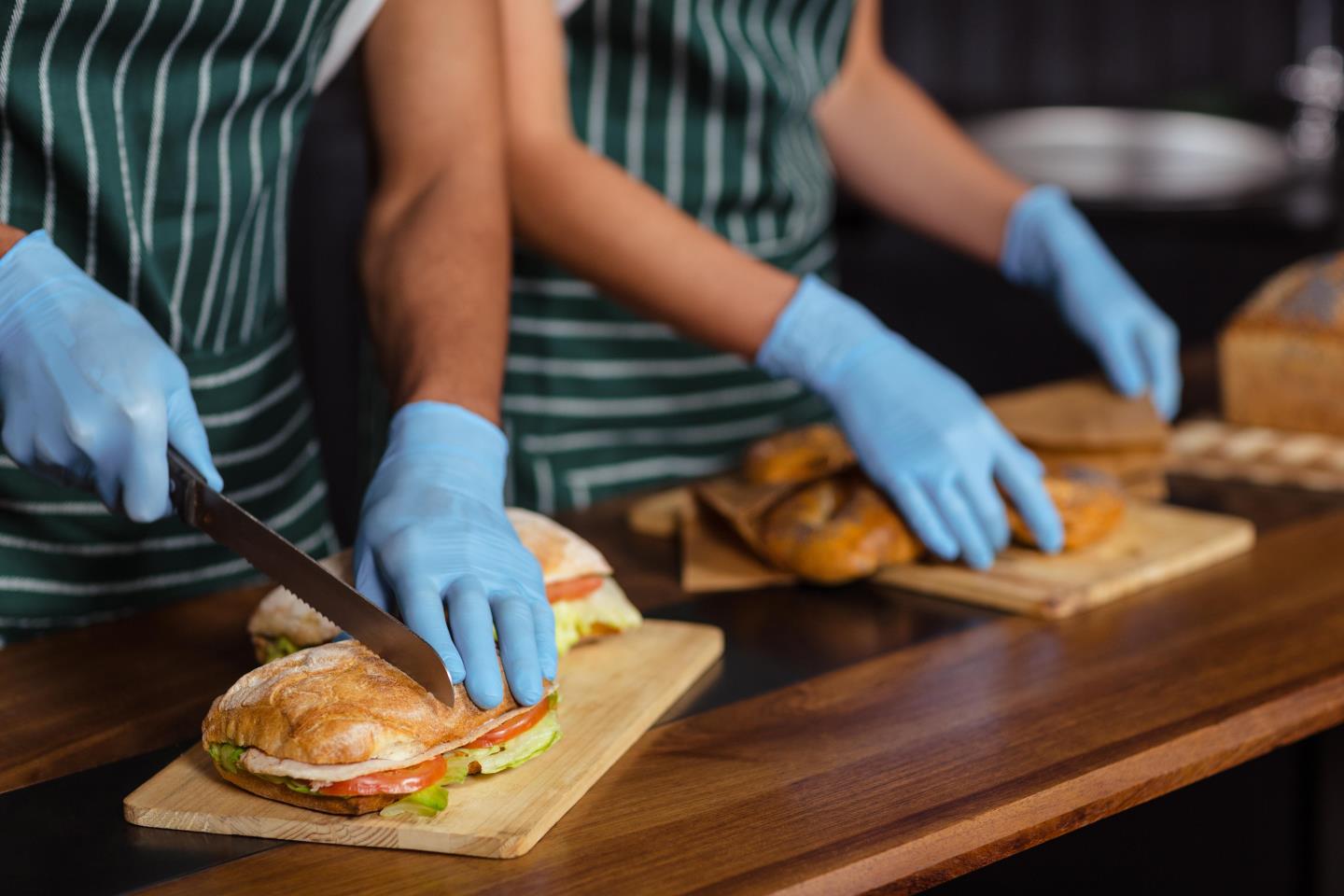Picking up food on-the-go is something many of us do regularly, with majority of us not even looking at the ingredients list. But for those with allergies, picking up the wrong sandwich could be the difference between life and death.
The introduction of Natasha’s Law earlier this month has made this simple task much easier due to businesses now having to provide a full list of ingredients and allergens on foods packaged for sale on the premises.
The law was first put forward in 2019 following the tragic death of 15-year-old Natasha Ednan-Laperouse who, in 2016, suffered a fatal allergic reaction after eating a baguette bought from Pret a Manger which had undeclared sesame seeds in it.
And it has taken until now to finally get it introduced.
But what does this mean for those with allergies or living with family members who have them?
Having a child with allergies
For dad-of-two, Josh Nowak, and his wife Carrie, it means their son Finn, who is two and has a range of food allergies, will grow up in a world where he can identify life-threatening ingredients easier.
The family live in Colliston, Arbroath, and found out Finn suffered severe reactions from a variety of foods when he was just months old. Finn is allergic to peanuts, sesame seeds, milk, eggs, and less common allergies like lentils and peas to name a few.
He said: “My wife breast-fed him for a long time. Three or four months in Carrie noticed if she had a heavy dairy meal that he would occasionally be a bit sick after feeding. At that time we knew zero about allergies. She was advised to cut a bit of dairy out and went dairy-free.
“At six months we started with some solids and one day we’d bought a baby porridge product and it had a milk powder packet. I was feeding him it and he immediately came out in hives after he’d touched it.”
After taking Finn to the paediatric A&E, the parents were advised to pursue allergy testing.
Finn underwent skin prick tests where 90% of his other allergies were confirmed which included the majority of the top 14.
He was just nine months old when he was prescribed with EpiPens and antihistamine. The family don’t keep any foods with traces of his allergens in the house.
“The smallest of quantities can end up narrating reactions. If a drop of milk was to touch his skin he’d come out in hives. You don’t want to think about what that could end up like,” said Josh.
The importance of this law
While Finn is still young and isn’t able to experience the full benefit of this new law yet, his parents most certainly will.
And Josh says the publicity around allergens can only help Finn in the long term.
He added: “It doesn’t impact him directly right now, but Carrie and I can now sit with one of these products with the comfort of knowing that we wouldn’t be introducing an allergen into the environment.
“The more publicity around allergens has a much bigger impact for us. There’s generally a lack of understanding about what a food allergy can represent. How severe it can be.
“I think people have an awareness of hay fever more so than food allergies given its prevalence. For a lot of people, but of course not all, their hay fever symptoms are really severe. But some with hay fever symptoms have mild ones, too, like a runny nose.
“I think people take that and apply it to all allergies – they think it must be the same minor symptoms. Whereas in fact, allergies can escalate from minor symptoms to anaphylaxis, which is life-threatening.
“The severity of the reactions and how little an amount of food can generate such a reaction that can be life-threatening is terrifying. With peanuts, milligrams can kill them. This law will increase awareness and that is brilliant.”
Labelling
And Josh says a full list of ingredients on prepacked food, similar to what is already found on products in the supermarket, is a must for his family.
Labelling correctly and thoroughly is fatal. Josh is adamant that more needs to be done around precautionary labelling and businesses confirming whether something is or isn’t likely to have been contaminated.
He added: “It closes a loophole in the pre-existing legislation so that food businesses don’t have a back door out of being held responsible. It puts pressure on what allergy management they need to be doing.
“There’s a lot of focus on labelling but there’s a lot of precautionary labelling like ‘may contain nuts’. As an allergy parent you have to get a sense of trust in who is making your food or where it is made.
“When it is misused, it can really limit customer choice and confidence. I’ve seen products with no allergens say ‘made in a factory where other allergens are handled’. That is so limiting for customers and I don’t believe as a food business, that they don’t know if there’s a risk or not of cross-contamination.
“Someone who’s allergic to nuts might not be allergic to celery – those are two completely different foods, but both are being forced not to buy products because of this messaging. There should be mechanisms of support from the government or food standards agencies so that they are avoiding these statements. It isn’t good enough.”
The school environment
The couple were unsatisfied with their previous nursery allergy arrangements and took their son out as a result.
As a precautionary measure, Josh and Carrie are already having conversations with their local school to ensure that they are aware of Finn’s allergies and are working to create policies together.
Allergy UK statistics reveal that 17% of fatal food-anaphylaxis reactions in children happen while they are at school.
“Allergies are much more common and there needs to be more education within the school environment,” Josh said. “It is harder for them to communicate their allergies, what they mean and to ask the right questions.
“Schools and catering firms who provide schools – are they taking the right steps to protect children? They are much more vulnerable.
“We’re already having conversations with our local school. They are making all the right noises and want to get themselves in the right place to welcome him in a safe way.”
Restricting choices
Hannah Ballantyne lives in Perth and works as a news reporter for The Courier and Evening Telegraph.
She was 14 when she found out she had a nut allergy when she ate a macadamia nut. Her lips swelled up and her throat started to hurt.
The 26-year-old said: “It was very scary. I didn’t really fully understand what it meant and what it would mean going forward in my life – having a nut allergy.
“I didn’t understand that it would restrict me so much in the future. I think I was lucky to have discovered it so young because it meant I had longer to adapt to it.”
Always double-checking
She is also grateful that Natasha’s Law has finally been introduced, however says that no matter what changes are made for things to be easier with those with food allergies, that she will continue to double-check all of her food to ensure she is safe to eat it.
“I am constantly asking if something contains nuts – even when I go for a coffee.
“It’s a headache. I am so glad it is going to be different now and it will be easier for me to manage this.
“It’s sad it had to happen this way but I am glad that things have changed. The law means I can relax more when I’m eating out and actually enjoy it more.
“I have to check food daily and if I even have the slightest inkling that something could have nuts in it then I won’t buy it. It’s incredibly frustrating.
“I’ll still be studying ingredients lists due to paranoia more than anything. It will take me some time to flatten this habit out a bit. I will still be cautious for the next little while, but in the longer term this will make my life a lot easier and I will have a lot more safety when it comes to picking what I eat.
” I won’t be quite as fearful about it going forward.”
